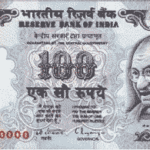 The past few days have brought mixed news regarding India’s economic future. Following in the steps of Morgan Stanley and the Asian Development Bank (see this earlier post), Standard Chartered Bank has issued its own report touting the country’s glowing prospects. But two cautionary notes were also sounded about worrisome developments that threaten to intrude on the rosy picture.
The past few days have brought mixed news regarding India’s economic future. Following in the steps of Morgan Stanley and the Asian Development Bank (see this earlier post), Standard Chartered Bank has issued its own report touting the country’s glowing prospects. But two cautionary notes were also sounded about worrisome developments that threaten to intrude on the rosy picture.
The Standard Chartered report estimates that by 2012 India will overtake China as the world’s most dynamic economy, and will clock average annual growth rates of 9.3 percent (versus China’s 6.9 percent) over the next two decades. By 2030, India is expected to have a $30-trillion economy, the third largest in the world, right behind the United States and with China in the top position. Over this 20-year period, India’s share of global GDP will also increase five-fold, from today’s 2 percent to 10 percent. The country will also experience staggering income growth, with per-capita income projected to rise six-fold from $1,164 today to $7,380 in 2030.
Like the Morgan Stanley and ADB reports, the Standard Chartered forecast assumes that India’s youthful demographic profile and the quickening process of urbanization will be the main drivers of growth. Between 2010-2030, India’s population is expected to increase by an additional 250 million people – 150 million more than will be added in China. As a result, India will contribute more than a quarter of the incremental increase in the global workforce over this period. And within Asia, the country is likely to have the fastest urban growth, with Mumbai and New Delhi, both with huge economies, emerging among the world’s five largest cities by 2030. (For a less optimistic view of India’s demographic potential, see this earlier post.)
Assessments like this give substance to the increasing talk, including by Prime Minister Manmohan Singh, about the “Indian Century.” But Duvvuri Subbarao, governor of India’s central bank, cautioned this week that the upward trajectory is not assured. In an online forum hosted by the Financial Times, he warned that the country requires a “quantum leap” in investment, including foreign direct investment (FDI), in order to achieve the kind of economic growth that China experienced over the past decade. A lot of foreign money is flowing into India these days, but according to Goldman Sachs short-term funds, rather than more desirable FDI, constitute about 80 percent of these inflows. Foreign portfolio investment has reached record levels over the past year, fueling a stock market boom, and could top $30 billion in the 2010-11 fiscal year. But the level of FDI flows have actually decreased by about a quarter in the fiscal year’s first 10 months.
Historically, China has done much better in attracting FDI than India. One persistent constraint on FDI inflows is the ramshackle nature of Indian tax and investment regulations, presently illustrated by the court battle over capital gains tax being waged against Vodafone. The case involves the U.K. company’s purchase in 2007- via subsidiaries registered in the Cayman Islands – of controlling interest in an Indian mobile phone operator owned by Hong Kong’s Hutchison Whampoa conglomerate. New Delhi is seeking to collect about $2.5 billion in taxes on the sale, even though the transaction was executed by offshore vehicles of the two principals and Vodafone was not the seller. The matter is now being reviewed by the Indian supreme court, and the outcome could affect similar cases involving General Electric, Mitsui and SABMiller. Judgments against these companies could dissuade multinational firms from making new investments.
Further threatening India’s reputation as an investment destination are the travails faced by the Pohang Iron and Steel Company (POSCO), a South Korean concern whose efforts to build a $12-billion plant in the eastern state of Orissa have so far been blocked by local protests over environmental concerns and land-acquisition measures. The episode, which represents the largest greenfield FDI project in the country, is similar to the Tata Group’s thwarted plans two years ago to locate its Nano manufacturing facility in West Bengal, and points up India’s lack of a coherent industrialization policy.
A second warning signal was issued by a New York Times report that India’s once-thriving microcredit sector faces imminent collapse as nearly all borrowers in Andhra Pradesh, one of the country’s largest states, have stopped repaying loans, encouraged by local politicians who accuse the industry of unscrupulous practices. Indian financial institutions, including most prominently SKS Microfinance and Axis Bank, have about $6 billion tied up in the sector. Commercial banks are the primary lenders to microloan institutions and the newspaper notes that some Indian officials fear microfinance could become the country’s version of the U.S. sub-prime mortgage debacle. The Financial Times quotes a senior executive at Axis Bank as stating that “the banking sector is heavily exposed,” but Dr. Subbarao, the central bank governor, denies that the situation poses a systemic risk to the financial system.